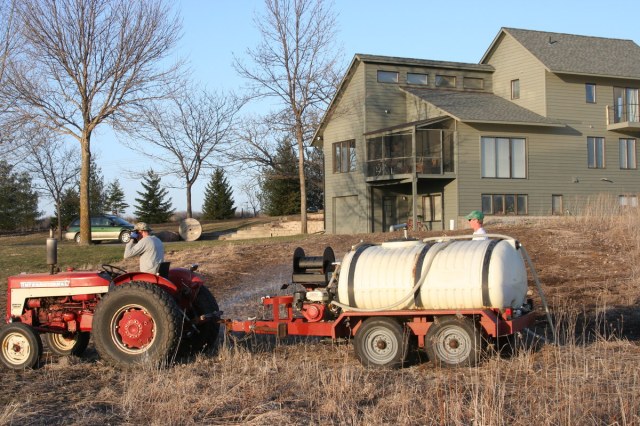 I moved onto this farm nearly six years ago, when I married Steve in July 2008. It is a second marriage for both of us. He has lived on this land since 1987, raised his three daughters here, designed and built the house. He has very strong ideas about the house, the land, design, etc. So it was quite a challenge and adjustment for me to move here.
I moved onto this farm nearly six years ago, when I married Steve in July 2008. It is a second marriage for both of us. He has lived on this land since 1987, raised his three daughters here, designed and built the house. He has very strong ideas about the house, the land, design, etc. So it was quite a challenge and adjustment for me to move here.
Recently, showing someone my garden, I could tell by the look on her face that she was not a gardener. She said it just looked like a lot of work. I’ve been reflecting on how lucky I am that I actually bonded with the garden. I came here never having gardened beyond flowers around the outside of the house and a container tomato plant.
I was going through some files that I wrote shortly after we got married. I really like this one, which was so raw at the time I wrote it that I just filed it away. I’ve revised it a bit, and share it with you now.
When you move into his house, where none of the colors can be changed, and the furniture all fits just so in the spaces, and the paintings are already sized to the walls, and you know that though it is very very nice, it is not something you yourself ever would have chosen, begin by cleaning. Clean well and deep. Empty the spaces room by room, clean into the corners, and add something of your own to what you put back. Try not to hold onto categories like “my laundry basket, his laundry basket.”
Instructions for the Second Wife
His work clothes might be too dirty after days in the field to mix with your own. That’s OK. Do your own laundry still, slipping something dark down the chute now and then, a black shirt, some underwear, socks, jeans, until all the pieces except for delicates and new clothes mingle. It takes time.
To claim the house, paint the outside. He’ll thank you and say it isn’t necessary, a task left over from before you signed on, but it is necessary. Do it. Climb the ladder to the second floor. Get some paint on the windowsill. Paint carefully around the vents. Soak up the spaces, and the hidden nooks. Learn how many difficult eaves there are to it. Where the cement was painted before and so must be painted this time too, up to the first row of shakes.
You’ll spend a lot of time looking for things. That’s normal. Have one place where you can tell him—if you want to move something of mine, or want it put away, put it here, on this desk, this table, this shelf, this step.
Begin by cooking. Get to know the oven and which burners burn hottest and fastest. How to pull out the bowls you need, and how to slide them back into place. Looking for a pot you’ll discover another drawer with odds and ends in it you can take out, old birthday hats or children’s party plates. You can put the picnic plates there, the plastic cups. Make ordinary dishes and difficult dishes, ones you thought you’d never make again, with expensive cheese sauces and crusts.
Be the one who brings in the tomatoes and beans and squash, even though you weren’t the one who planted them. Blanch and peel them and freeze them in bags for stews. You’ll be ready for winter. You’ll be ready next year. Make a list of what you want to grow, things you missed this year. Things you’ve never planted. Get a book on vegetable gardening, or find one in the basement on a shelf.
When the vines have died, take them down, work the soil, add compost, mulch. Bring a few flowers inside, ones that won’t winter over otherwise. Decide which bulbs you don’t like and dig them out before they can come up again. Leave room for herbs below the kitchen window. Plant a few bright things to lure in hummingbirds. Learn to do things you haven’t ever done before, things that will make you belong to this place.



So candid, so poignant. One of my friends, who married for the first time at the age of 60 always says marriage is “the land of compromise.” Love, love your blog in all its varieties, always fresh, sometimes surprising,
Thank you, Jane! You have a wise friend.
Sent from my iPad